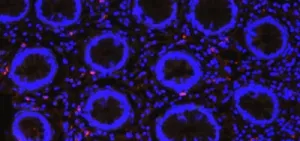(Press-News.org) Elephants, giraffes, pythons and other large species have higher cancer rates than smaller ones like mice, bats, and frogs, a new study has shown, overturning a 45-year-old belief about cancer in the animal kingdom.
The research, conducted by researchers from the University of Reading, University College London and The Johns Hopkins University School of Medicine, examined cancer data from 263 species across four major animal groups - amphibians, birds, mammals and reptiles. The findings challenge "Peto's paradox," a longstanding idea based on observations from 1977 that suggested there was no link between an animal's size and its cancer risk.
The study, published today (Monday, 24 February) in the journal Proceedings of the National Academy of Sciences (PNAS), revealed that bigger animals consistently show higher prevalence of both benign and malignant tumours. The researchers also discovered that species which evolved to be larger more rapidly, like elephants, developed better natural defences against cancer.
Professor Chris Venditti, senior author of the research at the University of Reading, said: "Everyone knows the myth that elephants are afraid of mice, but when it comes to cancer risk, mice are the ones who have less to fear. We've shown that larger species like elephants do face higher cancer rates - exactly what you'd expect given they have so many more cells that could go wrong.”
Keeping cancer in check
The study involved the analysis of the largest dataset of its kind to date. The researchers studied cancer records from veterinary autopsies of 31 amphibians, 79 birds, 90 mammals, and 63 reptiles. They used advanced statistical methods to analyse how cancer rates related to body size while accounting for how different species evolved.
Birds and mammals (which stop growing at a set size) and amphibians and reptiles (which can grow throughout their lives) were observed separately. Despite these differences in growth patterns, both groups showed the same overall trend - larger species had higher cancer rates. However, the study shows species that rapidly evolved to large sizes over short evolutionary timescales, like elephants, evolved improved mechanisms to control cell growth and prevent tumours. An elephant, for instance, has about the same cancer risk as a tiger - an animal just one-tenth its size.
Dr Joanna Baker, co-author from the University of Reading, added: "When species needed to grow larger, they also evolved remarkable defences against cancer. Elephants shouldn't fear their size - they developed sophisticated biological tools to keep cancer in check. It's a beautiful example of how evolution finds solutions to complex challenges."
Modern medicine makes it difficult to know exactly how humans fit this size-cancer pattern. The research shows a general trend where larger species have higher cancer rates, but also reveals how some species evolved better cancer defences as they grew larger. Overall, the findings support the idea that superior mechanisms of cellular defence - such as improved control of cell growth - have evolved at specific points in time and in larger species. This opens the door to new approaches to understanding the mechanisms responsible for cancer, potentially providing novel insight into human disease - and its treatment.
Budgies vs naked mole rats
On average, larger species get more cancer compared to smaller species. However, the researchers also identified a subset of species that get much more or much less cancer than you would expect given their body size. For example, the common budgie (Melopsittacus undulatus) was found to have rates of cancer more than 40 times higher than would be expected for its body size - weighing less than 30g. Conversely, the naked mole rat (Heterocephalus glaber), has almost no recorded prevalence of cancers.
Dr George Butler, lead author of the research at University College London and Johns Hopkins said: “Finding which animals are naturally better at fighting off cancer opens exciting new paths for research. By studying these successful species, we can better understand how cancers develop and potentially discover new ways to fight the disease. This could lead to breakthrough treatments in the future."
END
Bigger animals get more cancer, defying decades-old belief
2025-02-24
ELSE PRESS RELEASES FROM THIS DATE:
As dengue spreads, researchers discover a clue to fighting the virus
2025-02-24
LA JOLLA, CA—Children who experience multiple cases of dengue virus develop an army of dengue-fighting T cells, according to a new study led by scientists at La Jolla Institute for Immunology (LJI).
The findings, published recently in JCI Insights, suggest that these T cells are key to dengue virus immunity. In fact, most children who experienced two or more dengue infections showed very minor symptoms—or no symptoms at all—when they caught the virus again.
"We saw a significant T cell response in children who had been infected more than once before," says study leader and LJI Assistant Professor Daniela Weiskopf, Ph.D.
Dengue virus infects up ...
Teaming up tiny robot swimmers to transform medicine
2025-02-24
Smart artificial microswimmers—small robots that resemble microorganisms like bacteria or human sperm—could potentially be used for targeted drug delivery, minimally invasive surgery, and even in fertility treatments.
These types of complicated tasks won’t be accomplished by a single microswimmer. Multiple swimmers will be necessary; however, it’s unclear how such groups will move within the chemically and mechanically complex environment of the body’s fluids.
“We know that whenever a swimmer has a neighbor, it swims differently,” says Ebru Demir, an assistant ...
The Center for Open Science welcomes Daniel Correa and Amanda Kay Montoya to its Board of Directors
2025-02-24
(Charlottesville, VA, Feb. 24, 2025) –
The Center for Open Science (COS) is pleased to announce the appointment of Daniel Correa, Chief Executive Officer of the Federation of American Scientists, and Amanda Montoya, Associate Professor of Quantitative Psychology at UCLA, to the COS Board of Directors. Both will serve three-year terms from 2025 to 2027, bringing valuable expertise in science policy, innovation, research methodology, and open science advocacy.
Daniel Correa is the Chief Executive Officer of the Federation of American Scientists, ...
Research suggests common viral infection worsens deadly condition among premature babies
2025-02-24
FOR IMMEDIATE RELEASE
Researchers say they found that infection with a common virus that can be transmitted from mother to fetus before birth significantly worsens an often-fatal complication of premature birth called necrotizing enterocolitis (NEC) in experiments with mice.
The research team, led by Johns Hopkins Children’s Center investigators and funded by the National Institutes of Health, says the new findings advance the search for better treatments for NEC — a relatively rare condition, but still the most common emergency intestinal complication in preemies.
A report on the study published Feb. 13 in Cellular and Molecular Gastroenterology ...
UC Irvine scientists invent new drug candidates to treat antibiotic-resistant bacteria
2025-02-24
Irvine, Calif., Feb. 24, 2025 — There’s an arms race in medicine – scientists design drugs to treat lethal bacterial infections, but bacteria can evolve defenses to those drugs, sending the researchers back to square one. In the Journal of the American Chemical Society, a University of California, Irvine-led team describes the development of a drug candidate that can stop bacteria before they have a chance to cause harm.
“The issue with antibiotics is this crisis of antibiotic ...
A history of isolation and alcohol use may impact depression treatment
2025-02-24
Ketamine can effectively treat depression, but whether depressed patients with alcohol use disorder can safely use ketamine repeatedly remains unclear clinically. To investigate this possibility, Mohamed Kabbaj and colleagues from Florida State University modeled aspects of human depression in rats using long-term isolation and assessed how isolation and alcohol exposure alter ketamine intake. The authors found that a history of isolation and alcohol use influence the rewarding properties of ketamine in a sex-dependent manner.
Female rats took ketamine more than males in general. Prior alcohol use increased female rat ketamine ...
A new strategy to promote healthy food choices
2025-02-24
Poor food decisions and eating habits can contribute to excessive weight gain and health problems. Nutritional labels meant to convey healthiness instead may create negative expectations about taste or pose as a time-constraining hurdle for shoppers. Doris Schicker and Jessica Freiherr, from the Fraunhofer Institute for Process Engineering and Packaging, led a study in JNeurosci to explore whether pairing food labels with a sensory stimulus, like odor, affects how people perceive foods and thus promotes healthy shopping. ...
Report reveals high levels of added sugar in US infant formula despite medical recommendations
2025-02-24
LAWRENCE — Added sugar, derived from cheap crops like corn, is bad for babies.
According to the American Heart Association, added sugars are full of energy but lack nutritional value, boosting odds of obesity, type 2 diabetes, cardiovascular disease and other health problems.
But a study published today from the University of Kansas in the Journal of Food Composition and Analysis shows most infant formulas on the U.S. market contain primarily added sugars rather than the healthier, naturally occurring lactose found in cow-milk base that would be best for babies because ...
Arctic study urges stronger climate action to prevent catastrophic warming
2025-02-24
Remember when 2°C of global warming was the doomsday scenario? Well, we're now staring down the barrel of something much worse. From the fish on your plate to the weather outside your window, everything's about to change.
A new study by an international team of researchers, including Jackie Dawson, full professor, Geography, Environment and Geomatics at the University of Ottawa’s Faculty of Arts, underscores the grave risks posed by insufficient national commitments to reducing greenhouse gas emissions.
“Our findings ...
New technique to measure circulating tumor DNA in metastatic cancer may improve disease progression surveillance and patient outcomes
2025-02-24
Philadelphia, February 24, 2025 – In metastatic cancer surveillance, monitoring the actual concentrations of circulating tumor DNA (ctDNA) may be critical. Researchers showed that absolute ctDNA concentration thresholds can be defined to rule out or predict impending cancer progression. They introduce a dual threshold model in a novel study in The Journal of Molecular Diagnostics, published by Elsevier, that may improve cancer surveillance, patient stratification, and risk-informed, personalized treatment by providing more accurate and timely assessment of disease progression.
Lead ...





